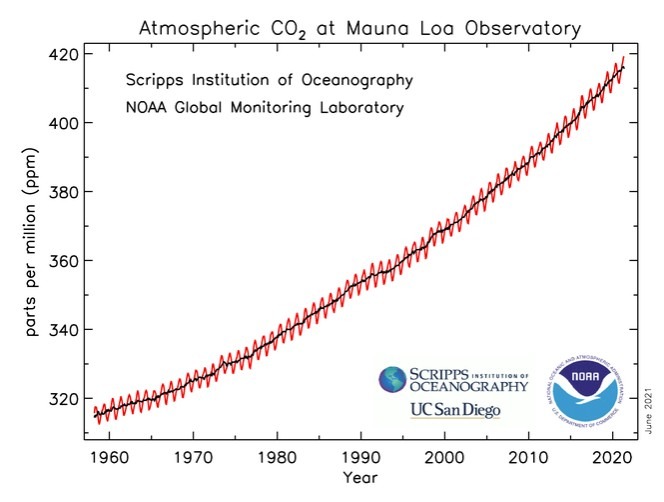Carbon Dioxide Reaches The Highest Level In Decades At Mauna Loa Observatory
For over six decades, atmospheric carbon dioxide measurements have been taken at the NOAA Mauna Loa Observatory in Hawaii. NOAA has now announced that atmospheric carbon dioxide measured at the observatory peaked for 2021 in May at a monthly average of 419 parts per million. That number represents the highest level since accurate measurements began being recorded 63 years ago.
On-site measurements of carbon dioxide at the weather station on Mauna Loa began in 1958 when scientist Charles David Keeling initiated the measurements. Measurements of the Observatory average 419.13 parts per million in May with a calculated monthly average of 418.92 parts per million. That is a slight increase compared to the average for May 2020 of 417 parts per million.
NOAA senior scientist Pieter Tans says that carbon dioxide is by far the most abundant human-caused greenhouse gas. He says that carbon dioxide can persist in the atmosphere and oceans thousands of years after it's emitted. According to Tans, humans are adding roughly 40 billion metric tons of carbon dioxide pollution to the atmosphere each year. He says if we want to avoid catastrophic climate change, our highest priority must be to reduce carbon dioxide pollution to zero at the earliest possible date.

There are many ways carbon dioxide pollution is generated, including emissions from fossil fuels used for transportation and electricity generation, cement manufacturing, deforestation, agriculture, and other practices. The emissions trap heat from the planet's surface that would otherwise escape into space, leading to steady warming of the environment.
NOAA also notes that there was no discernible signal in the data from the global economic disruption caused by the coronavirus pandemic. Some had wondered if the lockdowns around the world that kept people indoors and prevented traveling would reduce pollution.
